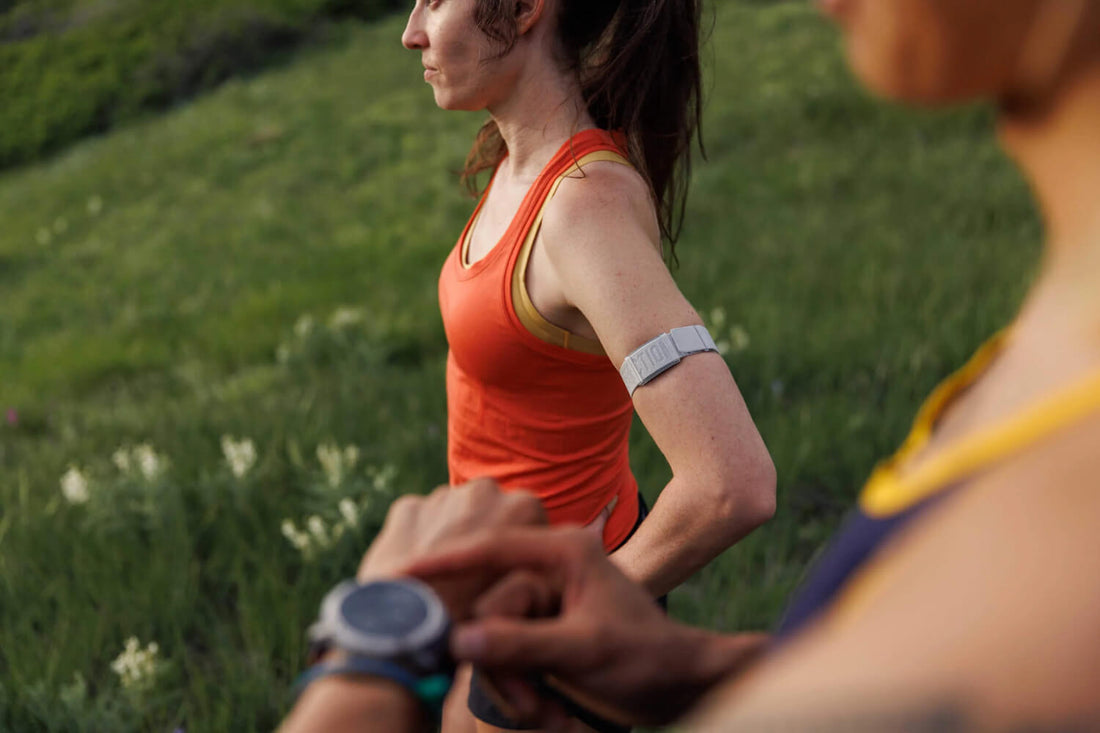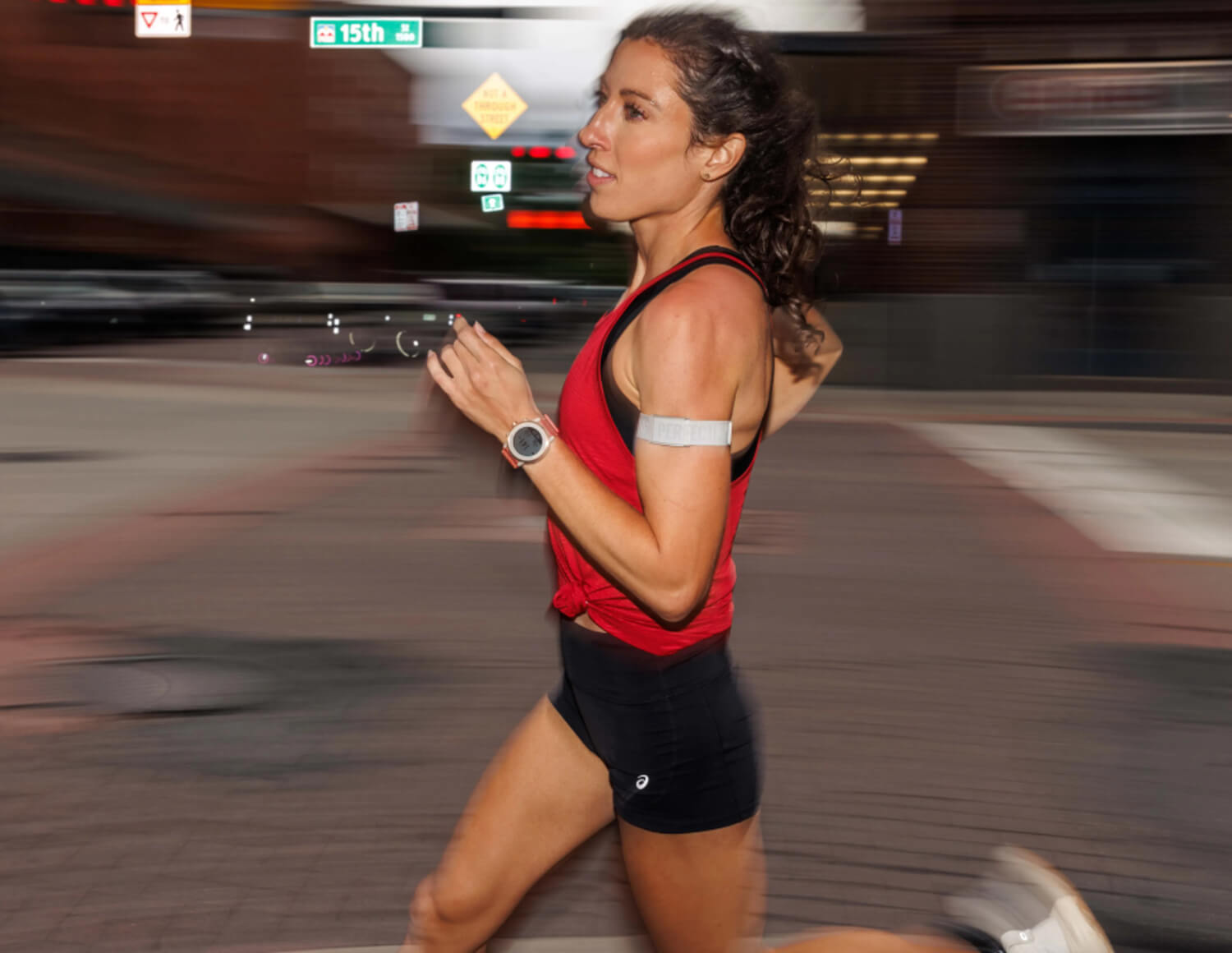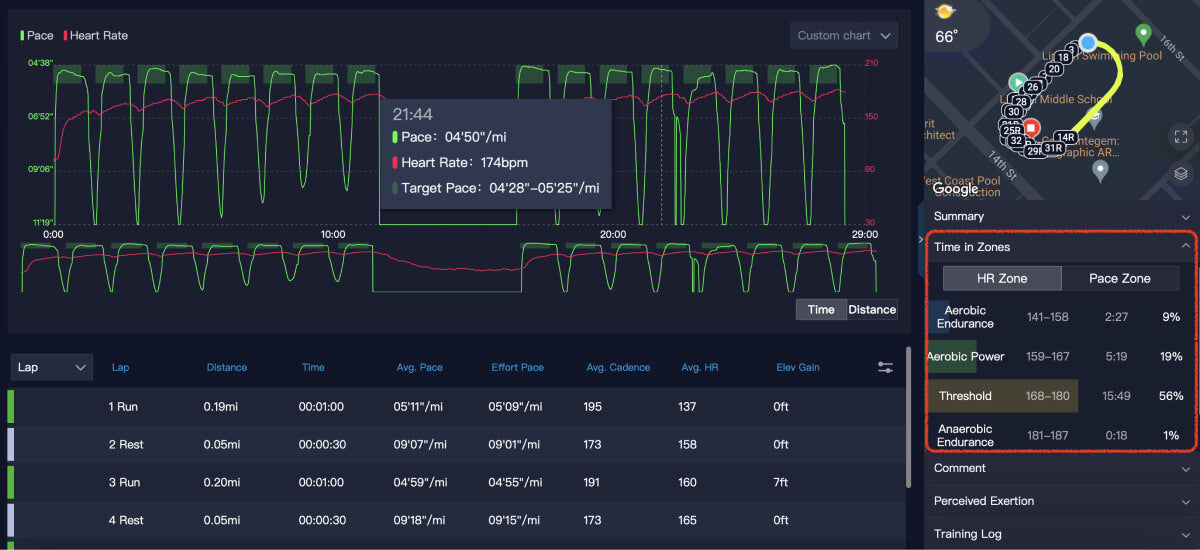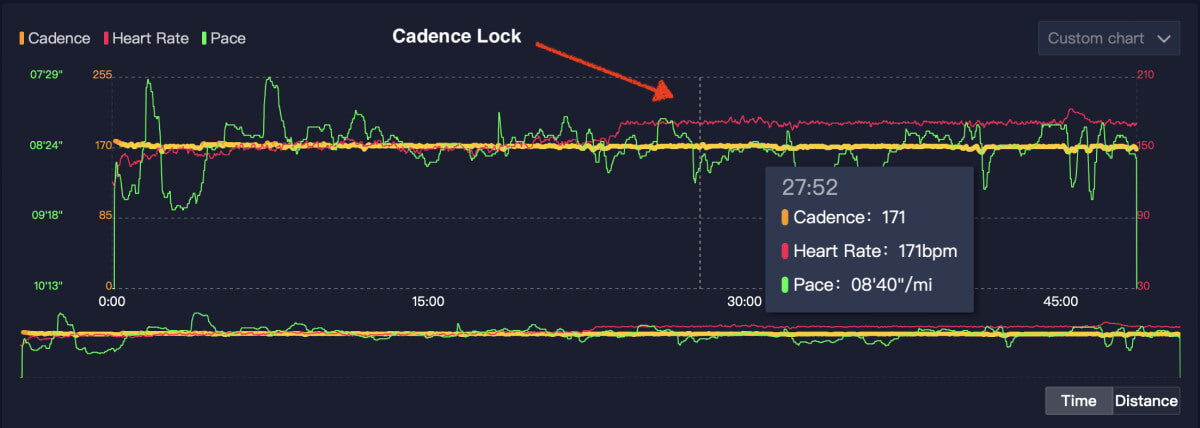
COROS Heart Rate Monitor - what's new?
author: ralpu
February 26, 2024

Introduction
Measuring heart rate is the most common way in the sports community to measure intensity during training. There are currently two basic methods of measuring heart rate available (see below for details), and each of these two methods has its pros and cons. In the article below, we will look at a comparison of the COROS Heart Rate Monitor with a classic chest strap.
How to measure heart rate during activity?
Heart rate measurement commonly used in sports is done in two basic ways:
- an optical sensor (in simple terms, LED diodes shine through the skin and try to capture blood vessel oscillations) or
- with a chest strap (in simple terms, it captures electrical discharges that occur during heart activity - ECG measurement).
Each of these two measurement methods has its advantages and disadvantages. Here is a quick summary.
| Optical sensor (wrist) | ECG (chest) | |
|---|---|---|
| Measurement method | measuring blood flow velocity using light | measurement of electrical discharges generated during heart activity |
| Pros | wearing comfort and extreme ease of measurement | The gold standard in heart rate measurement and quick response to changes |
| Cons | measurement influenced by multiple variables and delayed detection of changes | less comfortable to wear |
Classic chest strap or optical heart rate monitor?
Chest strap. Heart rate measurement is done by capturing the electrical discharge that occurs during heart activity. It is the same physical principle as when a doctor gives you an ECG examination. By its nature, a classic chest strap is more accurate and, above all, more responsive. In practice, it looks like this: when you start running a speed section, for example, the change in heart rate is captured and displayed on the device (watch, app, bike computer, etc.) within 2-3 seconds. If such a degree of accuracy and also almost immediate recording of changes in heart rate are important in your preparation, then a classic chest strap is a more suitable solution for you. The disadvantage is discomfort when worn during long training sessions, sliding off the body, or in the case of women, the difficulty of wearing it together with a sports bra.
Optical sensor. In this case, the LEDs of the optical sensor shine through the skin and try to capture the oscillations of blood capillaries caused by the heartbeat. Although this technology has made great progress in recent years, due to its physical nature, it cannot immediately record sudden changes in heart rate. In practice, it looks like this: for example, after starting a speed run, the change displayed on the device appears a little later than in the case of a classic chest strap - usually after 7-10 seconds. If you can get over this minor handicap, measuring heart rate via an optical sensor is a good choice for you. For 95% of the sports community, such a measurement is more than sufficient. Moreover, the wearing comfort is much greater than when wearing a classic chest strap.
Check out a great review by respected sports electronics reviewer DC Rainmaker on YouTube, who compares the COROS Heart Rate Monitor to a whole host of devices that measure heart rate - including a comparison with a classic chest strap.
The higher your heart rate, the harder your body is working during your workout. However, keep in mind that other factors also factor into this measurement - such as fatigue, ambient temperature, altitude, and more - and therefore heart rate measurement can sometimes seem inaccurate.
What's new with COROS Heart Rate Monitor?
Although the COROS Heart Rate Monitor uses an optical sensor, what is new is the location on the body where this measurement takes place. In other words, the COROS Heart Rate Monitor has taken the best of both methods of heart rate measurement.
During the development of the Heart Rate Monitor, the COROS brand achieved a measurement accuracy of +/- 3 beats/min. (BPM) compared to a classic chest strap in 95% of measurements during running activity.
Let's dive into the details.

Shorter response when measuring high-intensity activities

Heart rate is a reflection of how hard the body is working. However, a very strict chain reaction must take place in the body before it is reflected in increased heart activity. Example: if you start a 400 m sprint, your muscles send a signal to the brain that more oxygen is needed. The brain then sends a signal to the heart to start working harder and thus bring hemoglobin (oxygen carrier) in the blood to the working muscles. This whole process takes approximately 20-30 seconds before it is reflected at the heart level (increased activity). If we wait for this change, so to speak, at the wrist level (the optical heart rate sensor is on the bottom of the watch), far from the heart, then the detection of the change is delayed for another small moment.
However, since the COROS Heart Rate Monitor is worn on the bicep (much closer to the heart), the delay in capturing increased heart activity during speed training is significantly shortened.
Elimination of Cadence Lock phenomenon
The Cadence Lock phenomenon is an unwanted effect that occurs when measuring heart activity using an optical sensor (in general, any brand and any device). What is it? Simply put, the watch starts recording cadence (in simple terms, foot strikes on the ground while moving) instead of heart rate. This is a physical phenomenon when too much noise is generated during the measurement in the form of cadence/foot strikes, combined with a relatively small and weak blood flow in the wrist area. The COROS Heart Rate Monitor significantly eliminates this phenomenon (reducing noise during measurement), as it is worn in the biceps area, which contains many more muscle fibers and therefore many more blood vessels - the blood flow is much greater.

Much more comfortable to wear
Although the classic chest strap performs a much more sophisticated measurement (essentially an ECG measurement), the consensus in the sports community is clear - it is uncomfortable to wear, the strap slips and creates abrasions when worn for a long time. Not to mention the discomfort when wearing for women. The COROS Heart Rate Monitor, on the other hand, provides incomparably higher wearing comfort, it does not slip even during long activities. Customers describe it as completely forgetting to wear the COROS Heart Rate Monitor on their shoulder during activity. Here are a few statements (evaluations taken from the COROS Heart Rate Monitor product page).
"I've been looking for a heart rate monitor for a long time that would suit me not only in terms of technical aspects but also in terms of comfort. For me, as a woman, it was the perfect choice. It's light, doesn't get in the way, has a satisfactory battery life for my use, and charges quickly (it shows the battery percentage in the COROS app, so you can immediately check how much charge the monitor has). As soon as I put it on my arm, it starts measuring and pairs very quickly with a watch or a bike trainer in the winter months. I recommend it to everyone looking for accuracy, comfort, and functionality." Martin
"COROS HR monitor met all expectations. I rank it among the best technical purchases of recent years. I use it with a Garmin watch, without any problems. If someone doesn't like the classic HR belt, this is a great alternative. Comfort, good flashlight, reliable measurement." Adam
"I bought this heart rate monitor for 2 reasons: 1. I like to wear my watch on top of my clothing during activities where I have long sleeves/gloves, and 2. I don't like the chest strap, it's uncomfortable for me to wear. This COROS solution is brilliant, you don't notice the strap at all during activity and you don't lose any heart rate data. The battery life is sufficient, pairing with my COROS watch is seamless. I recommend it with all ten :)" Martin

Conclusion
The COROS Heart Rate Monitor brings many innovations that significantly eliminate the inaccuracy of measuring heart rate with an optical sensor. For hardcore athletes, the classic chest strap measuring heart rate based on the ECG principle still has an irreplaceable place - especially for its ability to capture changes faster. However, the difference between these two methods of measurement is dramatically decreasing. For the vast majority , the COROS Heart Rate Monitor is more than sufficient. It will be rewarded especially with its convenience and ease of use.
